- Home
- Michael Crichton
Timeline Page 4
Timeline Read online
Page 4
For several years afterward, nothing was heard from Doniger, or his company. People assumed he had retired, if they thought of him at all. It was, after all, common for prominent high-tech entrepreneurs to drop from view, after they had made their fortunes.
In 1994, Time magazine made a list of twenty-five people under the age of forty who were shaping our world. Robert Doniger was not among them. No one cared; no one remembered.
That same year he moved ITC back to the United States, establishing a laboratory facility in Black Rock, New Mexico, one hour north of Albuquerque. A thoughtful observer might have noticed that he had again moved to a location with a pool of available physicists. But there were no observers, thoughtful or otherwise.
So no one noticed when during the 1990s, ITC grew steadily in size. More labs were built on the New Mexico site; more physicists were hired. Doniger’s board of directors grew from six to twelve. All were CEOs of companies that had invested in ITC, or venture capitalists. All had signed draconian nondisclosure agreements requiring them to post a significant personal bond in escrow, to submit to a polygraph test on request, and to allow ITC to tap their phones without notice. In addition, Doniger demanded a minimum investment of $300 million. That was, he explained arrogantly, the cost of a seat on the board. “You want to know what I’m up to, you want to be a part of what we’re doing here, it’s a third of a billion dollars. Take it or leave it. I don’t give a damn either way.”
But of course he did. ITC had a fearsome burn rate: they had gone through more than $3 billion in the last nine years. And Doniger knew he was going to need more.
:
“Problem number one,” Doniger said. “Our capitalization. We’ll need another billion before we see daylight.” He nodded toward the boardroom. “They won’t come up with it. I have to get them to approve three new board members.”
Gordon said, “That’s a tough sell, in that room.”
“I know it is,” Doniger said. “They see the burn rate, and they want to know when it ends. They want to see concrete results. And that’s what I am going to give them today.”
“What concrete results?”
“ A victory,” Doniger said. “These dipshits are going to need a victory. Some exciting news about one of the projects.”
Kramer sucked in her breath. Gordon said, “Bob, the projects are all long-term.”
“One of them must be nearing completion. Say, the Dordogne?”
“It’s not. I don’t advise this approach.”
“And I need a victory,” Doniger said. “Professor Johnston has been out there in France with his Yalies for three years on our nickel. We ought to have something to show for it.”
“Not yet, Bob. Anyway, we don’t have all the land.”
“We have enough of the land.”
“Bob . . .”
“Diane will go. She can pressure them nicely.”
“Professor Johnston won’t like it.”
“I’m sure Diane can handle Johnston.”
One of the assistants opened the door to the conference room and looked into the hall. Doniger said, “In a goddamn minute!” But he immediately began walking toward the door.
He looked back at them over his shoulder and said, “Just do it!” And then he went into the room and closed the door.
:
Gordon walked with Kramer down the corridor. Her high heels clicked on the floor. Gordon glanced down and saw that beneath the very correct and corporate black Jil Sander suit, she was wearing black slingback heels. It was the classic Kramer look: seductive and unattainable at the same time.
Gordon said, “Did you know about this before?”
She nodded. “But not for long. He told me an hour ago.”
Gordon said nothing. He suppressed his irritation. Gordon had been with Doniger for twelve years now, since Advanced Magnetics days. At ITC, he had run a major industrial research operation on two continents, employing dozens of physicists, chemists, computer scientists. He’d had to teach himself about superconducting metals, fractal compression, quantum qubits, and high-flow ion exchange. He’d been up to his neck in theoretical physicists—the very worst kind—and yet milestones were reached; development was on schedule; cost overruns were manageable. But despite his success, Doniger still never really confided in him.
Kramer, on the other hand, had always enjoyed a special relationship with Doniger. She had begun as an attorney in an outside law firm, doing work for the company. Doniger thought she was smart and classy, so he hired her. She was his girlfriend for the next year, and even though that was long over, he still listened to her. She’d been able to head off several potential disasters over the years.
“For ten years,” Gordon said, “we’ve kept this technology quiet. When you think about it, it’s a miracle. Traub was the first incident to get away from us. Fortunately, it ended up in the hands of some doofus cop, and it won’t go any further. But if Doniger starts pushing in France, people might start to put things together. We’ve already got that reporter in Paris chasing us. Bob could blow this wide open.”
“I know he’s considered all that. That’s the second big problem.”
“Going public?”
“Yes. Having it all come out.”
“He’s not worried?”
“Yes, he’s worried. But he seems to have a plan to deal with it.”
“I hope so,” Gordon said. “Because we can’t always count on having a doofus cop sifting through our dirty laundry.”
Officer James Wauneka came into McKinley Hospital the next morning, looking for Beverly Tsosie. He thought he would check the autopsy results on the old guy who had died. But they told him that Beverly had gone up to the third-floor Imaging Unit. So he went up there.
He found her in a small beige room adjacent to the white scanner. She was talking to Calvin Chee, the MRI technician. He was sitting at the computer console, flicking black-and-white images up, one after another. The images showed five round circles in a row. As Chee ran through the images, the circles got smaller and smaller.
“Calvin,” she was saying. “It’s impossible. It has to be an artifact.”
“You ask me to review the data,” he said, “and then you don’t believe me? I’m telling you, Bev, it’s not an artifact. It’s real. Here, look at the other hand.”
Chee tapped the keyboard, and now a horizontal oval appeared on the screen, with five pale circles inside it. “Okay? This is the palm of the left hand, seen in a midsection cut.” He turned to Wauneka. “Pretty much what you’d see if you put your hand on a butcher block and chopped straight down through it.”
“Very nice, Calvin.”
“Well, I want everybody to be clear.”
He turned back to the screen. “Okay, landmarks. Five round circles are the five palmar bones. These things here are tendons going to the fingers. Remember, the muscles that work the hand are mostly in the forearm. Okay. That little circle is the radial artery, which brings blood to the hand through the wrist. Okay. Now, we move outward from the wrist, in cut sections.” The images changed. The oval grew narrower, and one by one, the bones pulled apart, like an amoeba dividing. Now there were four circles. “Okay. Now we’re out past the palm, and we see only the fingers. Small arteries within each finger, dividing as we go out, getting smaller, but you can still see them. See, here and here? Okay. Now moving out toward the fingertips, the bones get larger, that’s the proximal digit, the knuckle . . . and now . . . watch the arteries, see how they go . . . section by section . . . and now.”
Wauneka frowned. “It looks like a glitch. Like something jumped.”
“Something did jump,” Chee said. “The arterioles are offset. They don’t line up. I’ll show you again.” He went to the previous section, then the next. It was clear—the circles of the tiny arteries seemed to hop sideways. “That’s why the guy had gangrene in his fingers. He had no circulation because his arterioles didn’t line up. It’s like a mismatch or something.”
Beverly shook her head. “Calvin.”
“I’m telling you. And not only that, it’s other places in his body, too. Like in the heart. Guy died of massive coronary? No surprise, because the ventricular walls don’t line up, either.”
“From old scar tissue,” she said, shaking her head. “Calvin, come on. He was seventy-one years old. Whatever was wrong with his heart, it worked for more than seventy years. Same with his hands. If this arteriole offset was actually present, his fingers would have dropped off years ago. But they didn’t. Anyway, this was a new injury; it got worse while he was in the hospital.”
“So what are you going to tell me, the machine is wrong?”
“It has to be. Isn’t it true that you can get registration errors from hardware? And there are sometimes bugs in scaling software?”
“I checked the machine, Bev. It’s fine.”
She shrugged. “Sorry, I’m not buying it. You’ve got a problem somewhere. Look, if you’re so sure you’re right, go down to pathology and check the guy out in person.”
“I tried,” Chee said. “The body was already picked up.”
“It was?” Wauneka said. “When?”
“Five o’clock this morning. Somebody from his company.”
“Well, that company’s way over by Sandia,” Wauneka said. “Maybe they’re still driving the body—”
“No.” Chee shook his head. “Cremated this morning.”
“Really? Where?”
“Gallup Mortuary.”
“They cremated him here?” Wauneka said.
“I’m telling you,” Chee said, “there’s definitely something weird about this guy.”
Beverly Tsosie crossed her arms over her chest. She looked at the two men. “There’s nothing weird,” she said. “His company did it that way because they could arrange it all by phone, long-distance. Call the mortuary, they come over and cremate him. Happens all the time, especially when there’s no family. Now cut the crap,” she said, “and call the repair techs to fix the machine. You have a problem with your MRI—and that’s all you have.”
:
Jimmy Wauneka wanted to be finished with the Traub case as soon as possible. But back in the ER, he saw a plastic bag filled with the old guy’s clothes and personal belongings. There was nothing to do but call ITC again. This time he spoke to another vice president, a Ms. Kramer. Dr. Gordon was in meetings and was unavailable.
“It’s about Dr. Traub,” he said.
“Oh yes.” A sad sigh. “Poor Dr. Traub. Such a nice man.”
“His body was cremated today, but we still have some of his personal effects. I don’t know what you want us to do with them.”
“Dr. Traub doesn’t have any living relatives,” Ms. Kramer said. “I doubt anybody here would want his clothes, or anything. What effects were you speaking of?”
“Well, there was a diagram in his pocket. It looks like a church, or maybe a monastery.”
“Uh-huh.”
“Do you know why he would have a diagram of a monastery?”
“No, I really couldn’t say. To tell the truth, Dr. Traub got a little strange, the last few weeks. He was quite depressed, ever since his wife died. Are you sure it’s a monastery?”
“No, I’m not. I don’t know what it is. Do you want this diagram back?”
“If you wouldn’t mind sending it along.”
“And what about this ceramic thing?”
“Ceramic thing?”
“He had a piece of ceramic. It’s about an inch square, and it’s stamped ‘ITC.’”
“Oh. Okay. That’s no problem.”
“I was wondering what that might be.”
“What that might be? It’s an ID tag.”
“It doesn’t look like any ID tag I ever saw.”
“It’s a new kind. We use them here to get through security doors, and so on.”
“You want that back, too?”
“If it’s not too much trouble. Tell you what, I’ll give you our FedEx number, and you can just stick it in an envelope and drop it off.”
Jimmy Wauneka hung up the phone and he thought, Bullshit.
:
He called Father Grogan, the priest at his local Catholic parish, and told him about the diagram, and the abbreviation at the bottom: mon.ste.mere.
“That would be the Monastery of Sainte-Mère,” he said promptly.
“So it is a monastery?”
“Oh absolutely.”
“Where?”
“I have no idea. It’s not a Spanish name. ‘Mère’ is French for ‘Mother.’ Saint Mother means the Virgin Mary. Perhaps it’s in Louisiana.”
“How would I locate it?” Wauneka said.
“I have a listing of monasteries here someplace. Give me an hour or two to dig it up.”
:
“I’m sorry, Jimmy. I don’t see any mystery here.”
Carlos Chavez was the assistant chief of police in Gallup, about to retire from the force, and he had been Jimmy Wauneka’s adviser from the start. Now he was sitting back with his boots up on his desk, listening to Wauneka with a very skeptical look.
“Well, here’s the thing,” Wauneka said. “They pick up this guy out by Corazón Canyon, demented and raving, but there’s no sunburn, no dehydration, no exposure.”
“So he was dumped. His family pushed him out of the car.”
“No. No living family.”
“Okay, then he drove himself out there.”
“Nobody saw a car.”
“Who’s nobody?”
“The people who picked him up.”
Chavez sighed. “Did you go out to Corazón Canyon yourself, and look for a car?”
Wauneka hesitated. “No.”
“You took somebody’s word for it.”
“Yes. I guess I did.”
“You guess? Meaning a car could still be out there.”
“Maybe. Yeah.”
“Okay. So what did you do next?”
“I called his company, ITC.”
“And they told you what?”
“They said he was depressed, because his wife had died.”
“Figures.”
“I don’t know,” Wauneka said. “Because I called the apartment building where Traub lived. I talked to the building manager. The wife died a year ago.”
“So this happened close to the anniversary of her death, right? That’s when it usually happens, Jimmy.”
“I think I ought to go over and talk to some folks at ITC Research.”
“Why? They’re two hundred and fifty miles from where this guy was found.”
“I know, but—”
“But what? How many times we get some tourist stranded out in the reservations? Three, four times a year? And half the time they’re dead, right? Or they die afterward, right?”
“Yes. . ..”
“And it’s always one of two reasons. Either they’re New Age flakes from Sedona who come to commune with the eagle god and got stuck, their car broke down. Or they’re depressed. One or the other. And this guy was depressed.”
“So they say. . ..”
“Because his wife died. Hey, I believe it.” Carlos sighed. “Some guys are depressed, some guys are overjoyed.”
“But there’s unanswered questions,” Wauneka said. “There’s some kind of diagram, and a ceramic chip—”
“Jimmy. There’s always unanswered questions.” Chavez squinted at him. “What’s going on? Are you trying to impress that cute little doctor?”
“What little doctor?”
“You know who I mean.”
“Hell no. She thinks there’s nothing to all this.”
“She’s right. Drop it.”
“But—”
“Jimmy.” Carlos Chavez shook his head. “Listen to me. Drop it.”
“Okay.”
“I’m serious.”
“Okay,” Wauneka said. “Okay, I’ll drop it.”
:
The next day, the police in
Shiprock picked up a bunch of thirteen-year-old kids joyriding in a car with New Mexico plates. The registration in the glove compartment was in the name of Joseph Traub. The kids said they had found the car on the side of the road past Corazón Canyon, with the keys still in it. The kids had been drinking, and the inside of the car was a mess, sticky with spilled beer.
Wauneka didn’t bother to drive over and see it.
:
A day after that, Father Grogan called him back. “I’ve been checking for you,” he said, “and there is no Monastery of Sainte-Mère, anywhere in the world.”
“Okay,” Wauneka said. “Thanks.” It was what he’d been expecting, anyway. Another dead end.
“At one time, there was a monastery of that name in France, but it was burned to the ground in the fourteenth century. It’s just a ruin now. In fact, it’s being excavated by archaeologists from Yale and the University of Toulouse. But I gather there’s not much there.”
“Uh-huh. . ..” But then he remembered some of the things the old guy had said, before he died. Some of the nonsense rhymes. “Yale in France, has no chance.” Something like that.
“Where is it?” he said.
“Somewhere in southwest France, near the Dordogne River.”
“Dordogne? How do you spell that?” Wauneka said.
DORDOGNE
“The glory of the past is an illusion.
So is the glory of the present.”
EDWARD JOHNSTON
The helicopter thumped through thick gray fog. In the rear seat, Diane Kramer shifted uneasily. Whenever the mist thinned, she saw the treetops of the forest very close beneath her. She said, “Do we have to be so low?”
Sitting in front alongside the pilot, André Marek laughed. “Don’t worry, it’s perfectly safe.” But then, Marek didn’t look like the sort of man to worry about anything. He was twenty-nine years old, tall, and very strong; muscles rippled beneath his T-shirt. Certainly, you would never think he was an assistant professor of history at Yale. Or second in command of the Dordogne project, which was where they were headed now.
“This mist will clear in a minute,” Marek said, speaking with just a trace of his native Dutch accent. Kramer knew all about him: a graduate of Utrecht, Marek was one of the new breed of “experimental” historians, who set out to re-create parts of the past, to experience it firsthand and understand it better. Marek was a fanatic about it; he had learned medieval dress, language and customs in detail; supposedly, he even knew how to joust. Looking at him, she could believe it.

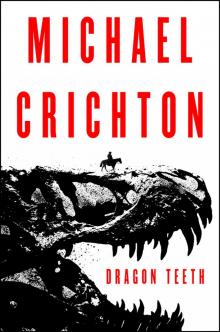 Dragon Teeth
Dragon Teeth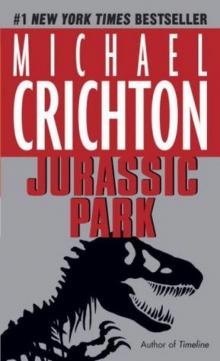 Jurassic Park
Jurassic Park Micro
Micro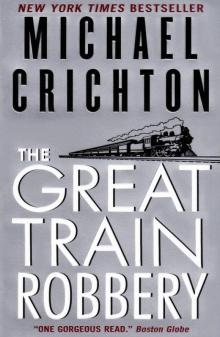 The Great Train Robbery
The Great Train Robbery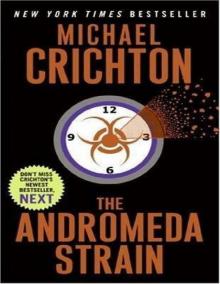 The Andromeda Strain
The Andromeda Strain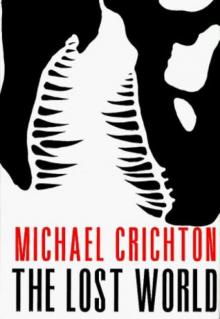 The Lost World
The Lost World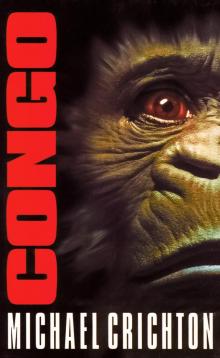 Congo
Congo Travels
Travels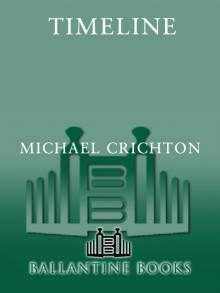 Timeline
Timeline Sphere
Sphere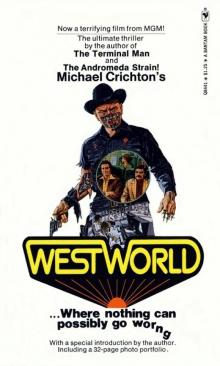 Westworld
Westworld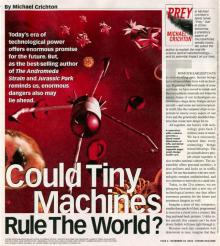 Prey
Prey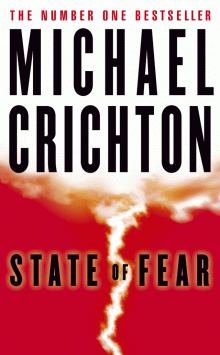 State Of Fear
State Of Fear Next
Next Disclosure
Disclosure Pirate Latitudes
Pirate Latitudes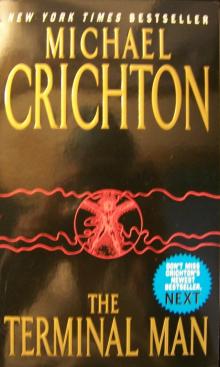 The Terminal Man
The Terminal Man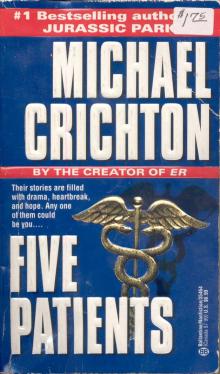 Five Patients
Five Patients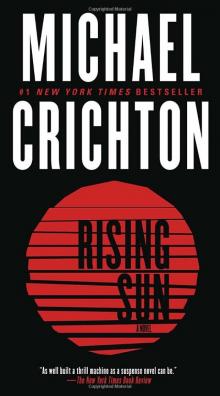 Rising Sun
Rising Sun Binary
Binary The Andromeda Evolution
The Andromeda Evolution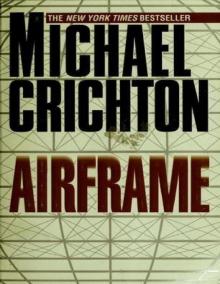 Airframe
Airframe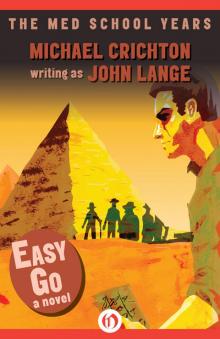 Easy Go
Easy Go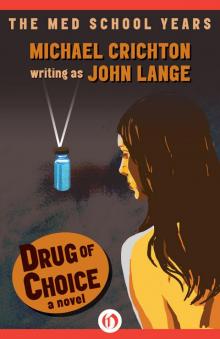 Drug of Choice
Drug of Choice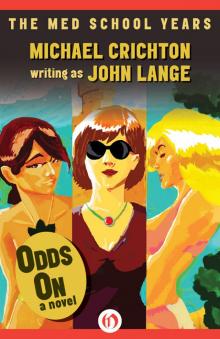 Odds On: A Novel
Odds On: A Novel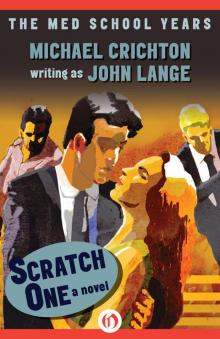 Scratch One
Scratch One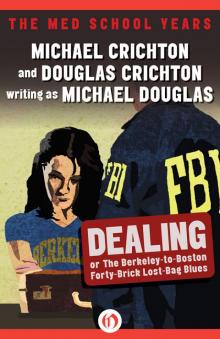 Dealing or The Berkeley-to-Boston Forty-Brick Lost-Bag Blues
Dealing or The Berkeley-to-Boston Forty-Brick Lost-Bag Blues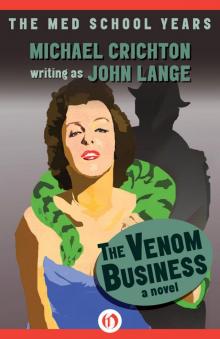 Venom Business
Venom Business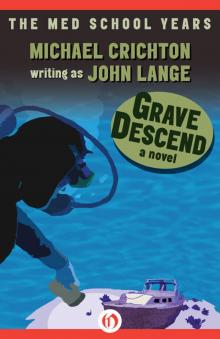 Grave Descend
Grave Descend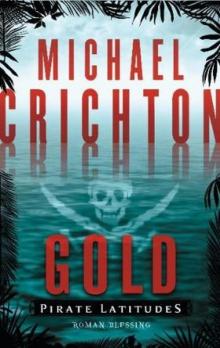 Gold - Pirate Latitudes
Gold - Pirate Latitudes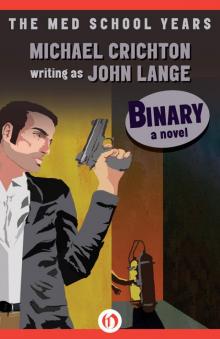 Binary: A Novel
Binary: A Novel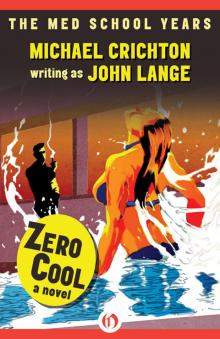 Zero Cool
Zero Cool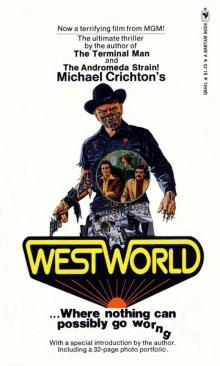 Delos 1 - Westworld
Delos 1 - Westworld